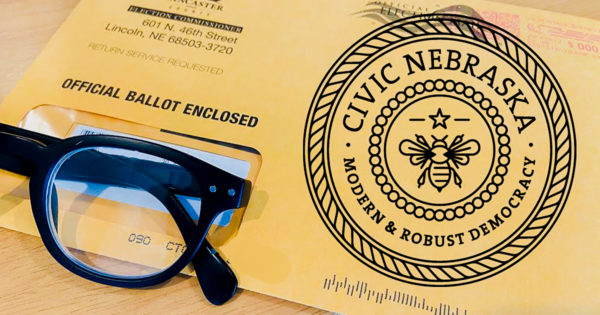It’s Cinco de Mayo! Woo hoo! Happy Mexican Independence Day!
Just kidding. That’s not what this day is about – not in the United States, and certainly not in Mexico. Today, in bars and restaurants across the nation, carefree Americanos are knocking back margaritas and nachos in honor of … Mexican culture, or something? Most of us don’t really know – but it wasn’t always this way. In fact, how a one-day skirmish in south-central Mexico in 1862 inspired a yearly fiesta north of the border is steeped in our nations’ intertwined cultures, identities, and shared devotion to democracy. Read on, fellow patriot, for a speed history of Cinco de Mayo’s shared Mexican and American roots – and why, in our opinion, a return to those roots would be most welcome.
Oui the People
Far from celebrating Mexico’s declaration of independence (that was from Spain, of course, on Sept. 16, 1810), Cinco de Mayo is actually a nod to a one-day battle during Mexico’s war with France that occurred five decades later. On May 5, 1862, a ragtag Mexican army outlasted a French invasion force in the town of Puebla. Today, the holiday is mostly a regional observance in Mexico and is known as El Día de la Batalla de Puebla. In English, that’s “The Day of the Battle of Puebla,” natch.
The battle was a huge upset and came during a conflict indirectly caused by American expansion. In the early 1860s, the Mexican government was deeply in debt, the result of some 15 years of conflict that started with the Mexican-American War in 1846. The American victory forced Mexico to cede much of its northwest territory, which today makes up the U.S. Southwest. Having borrowed heavily from European powers to prosecute the war (and a subsequent civil war between Mexican liberals and conservatives over how much power the church should have in state affairs), Mexico was facing all of its loans coming due.
In late 1861, Spain, Great Britain, and France landed troops at Veracruz, Mexico, to send President Benito Juárez a signal that they were serious about collecting. Juárez quickly settled with the Spanish and British, but the French, unfortunately, weren’t in a deal-making mood. Napoleon III, the nephew of the original despotic model, had designs on a Latin American satellite state that was free of annoyances like democracy, human rights, and racial equality – and he ordered a 6,500-man French force to march on Mexico City in the spring of 1862.
Mexico, though, wasn’t having it. Gen. Ignacio Zaragoza activated a mostly volunteer army to halt the French advance. On May 5, 1862, he skillfully leveraged home-country advantage to repel the invaders. The general entrenched his smaller, ill-equipped, lightly trained forces on the higher ground between fortifications at the city’s entrance, and over the course of the day, the heroic Mexicans turned back not one, not two, but three French frontal assaults. Mighty France lost 1,000 men before retreating back to Mexico’s east coast.
It was a threshold moment for the young Mexican nation. In the course of a single day, it had earned a major victory over a European juggernaut, discovered a new hero in Zaragoza, and also met a future president in Brigadier Gen. Porfirio Diaz, whose role in the defense of Puebla earned many a plaudit.
This was a very good reason to celebrate.
Meanwhile, up north
To understand why May 5, 1862, is also an important day in American history, let’s take a look at our own Civil War, which was raging at the same time.
From Paris, Napoleon III saw kindred spirits in the Confederate States of America. The emperor planned to capture Mexico City, then strike a larger cotton-for-weapons deal with the South. At best, a French-Confederate alliance would have prolonged the bloodiest conflict on U.S. soil; at worst, it could have swung the conflict to the Confederacy. But Mexico’s determination at the Battle of Puebla kept Napoleon’s attention on Mexico City, not Washington, and the deal never materialized. That gave the Union army the time to grind Johnny Reb down and for democracy to prevail. Lucky break, that.
In the days and weeks after the Battle of Puebla, Mexicans were busy reinforcing their positions in a continued defense of their homeland. But word of the victory at Puebla raced north, most prevalently to the new U.S. states of Texas and California via Spanish-language newspapers. Spontaneous celebrations – the very first Cinco de Mayo parties in the United States – broke out upon hearing the news.
Celebrations persisted especially in California, and for good reason. The Golden State was a “free state” in 1862, but for years, Southern politicians had pushed to expand slavery west by extending the Mason-Dixon Line to the Pacific. The American Southwest, then, would have served as a staging area for a Confederate expansion into Latin America upon victory over the North. This obviously made California’s Mexican-American population uneasy. They saw the French invading Mexico and attempting to oust a democratic government in favor of a white supremacist regime. They realized the wars in the United States and Mexico were two sides of the same coin.
So they got to work. They formed hundreds of local juntas, or activist organizations, across California, raising money and aid for Mexican forces. The Battle of Puebla was already a symbol of the struggle for self-government, and Cinco de Mayo observances adopted a similar tone. The first “official” Cinco de Mayo celebrations were recorded in 1863 in Los Angeles and San Francisco, with speakers, music, parades, and other festivities. The sentiment was loud and clear: Mexican-Americans were staunch supporters of freedom, racial equality, and democracy, and neither the French nor the Confederacy was going to take that away.
The empire strikes back

By the following year, the French had regrouped. They again marched to Puebla and this time delivered a decisive victory. After routing Mexican forces they marched on to Mexico City, installed a puppet government headed by Austrian Archduke Maximilian I, and officially founded the Second Mexican Empire.
Remember Benito Juárez, Mexico’s democratically elected president? He spent the next four years in semi-exile, refusing to recognize Maximilian as the country’s leader. Juárez helped lead resistance to the French occupation, sending loyal agents to America to scare up money, weapons, and political pressure to expel the French. But with the Civil War still raging, U.S. President Abraham Lincoln was leery to provoke France for fear that the French or other European empires would intervene on the Confederacy’s behalf.
That all changed by April 1865. Lincoln’s assassination notwithstanding, the Confederacy was in shambles, slavery was gone with the wind, and the United States was, well, united. Gen. Ulysses S. Grant, who understood Mexico’s role in the continental fight for democracy, marched Union troops into the Rio Grande Valley to the Mexican border. There, his soldiers “accidentally” let thousands of firearms and supplies “go missing.” Magically, the guns and ammo ended up in the hands of our allies.
In June 1867, Juárez’s forces finally captured and executed Maximilian I and reinstalled Juárez as head of state. A U.S. hot war with the French over Mexico never materialized, but we were able to repay our Civil War debt to the defenders of Puebla.
A day for unity and identity

For most modern Mexicans outside Puebla, May 5 is much like any other day. The state of Puebla does hold parades, speeches, and re-enactments of the 1862 battle, but Cinco de Mayo isn’t extensively celebrated in the rest of the country (as Nebraskans with an affinity for Arbor Day, we can relate). So why is it such a to-do up here? The answer is as complicated as it is reflective of the intertwined history of our two countries.
For the rest of the 19th century and a majority of the 20th, May 5 in America was a quiet vehicle for Mexican-American activists to boost pride in their history and heritage. Cinco de Mayo received a boost in the 1960s and early ’70s when the Chicano Movement revived the holiday to inspire their community, which was historically marginalized and ignored in mainstream America. The fact that Cinco de Mayo returned to the popular consciousness during the civil rights era should surprise no one: Together, once-disparate, underdog groups found strength in one another. May 5 became a modern way to stoke a sense of unity through shared identity.
From appreciation to appropriation

Within a dozen years, Ronald Reagan was the U.S. president, the Decade of Excess was in full swing, and the Chicano Movement’s momentum had slowed considerably. That left an opening for the most American of American treatments for Cinco de Mayo – commercialization. In the 1980s, U.S. corporations became aware of the holiday’s potential, both because of its spot on the calendar as well as the nation’s changing demographics: The United States was growing more diverse, largely driven by Latino immigration. Unsurprisingly, U.S. companies were actively seeking new ways to capture this rising force in American life.
Enter Coors Brewing Co., brewer of perfectly adequate yet undistinguished pilsner beer. Coors, the unlikeliest of all the unlikely players in this story, became the first major U.S. company to elevate Cinco de Mayo into mainstream American culture. Coors was unlikely because the company wasn’t exactly a progressive trailblazer; in fact, it had quite a troubled history with the Mexican-American community, having faced years-long boycotts for alleged discriminatory practices based on race.
In 1985, partly to burnish its image, Coors agreed to donate about $350 million to Latino groups in exchange for the boycott being lifted. Soon after, Coors put its formidable mass-marketing machine to work – almost overnight, Cinco de Mayo went from a powerful unifier of Mexican-American identity to a national-but-kinda-cringy fiesta in bars and restaurants across North America.
Digression: Recently on Ted Lasso, the titular soccer coach visits an American-themed restaurant and bar in Amsterdam called Yankee Doodle Burger Barn. The place is a funhouse-mirror version of America – Elvis is on the big screen, old Jordan highlights are playing on the TVs, and waiters are dressed like Woody from Toy Story and have fake Southern drawls. The greeter asks Ted which themed section of the restaurant sounds best: Windy City, Big Apple, or Hollywood. When Ted replies “Chicago,” it baffles the waiter until Ted finally repeats: “Windy City.”







